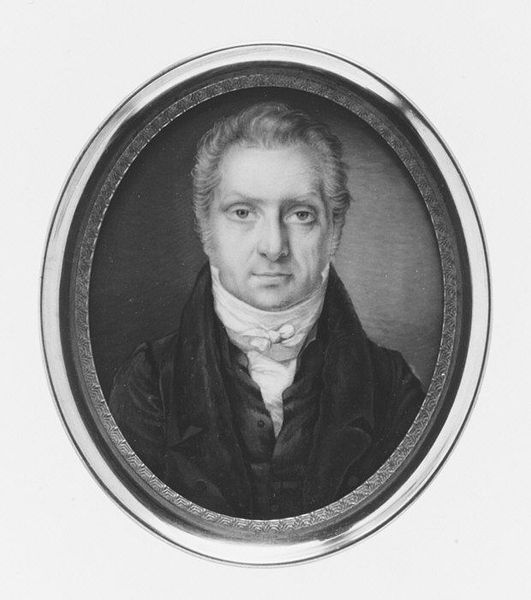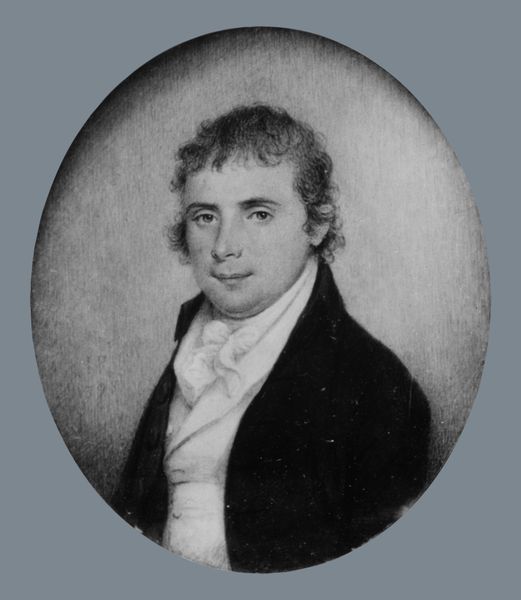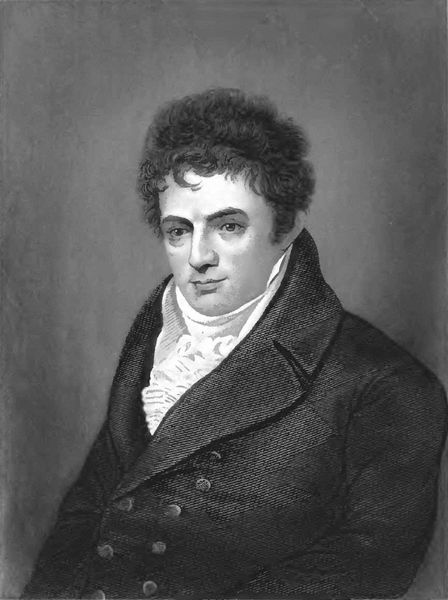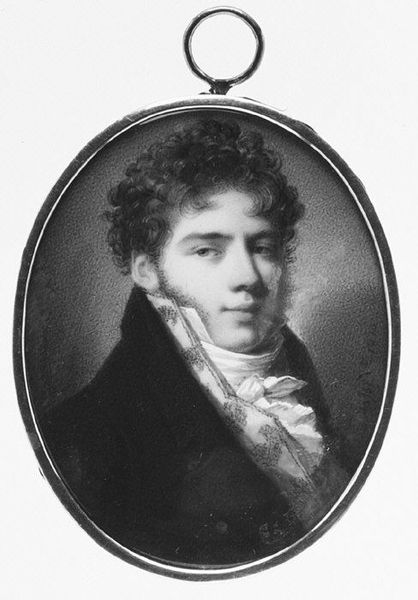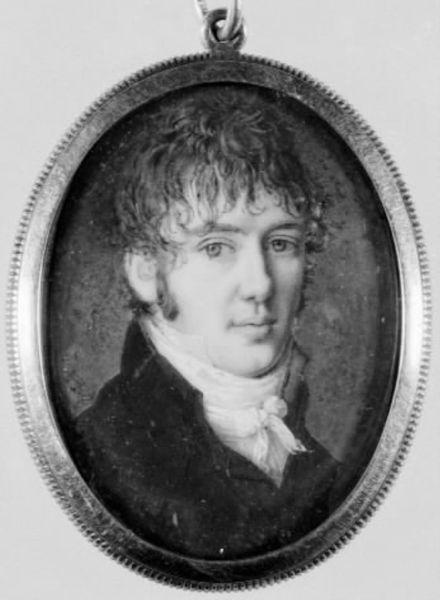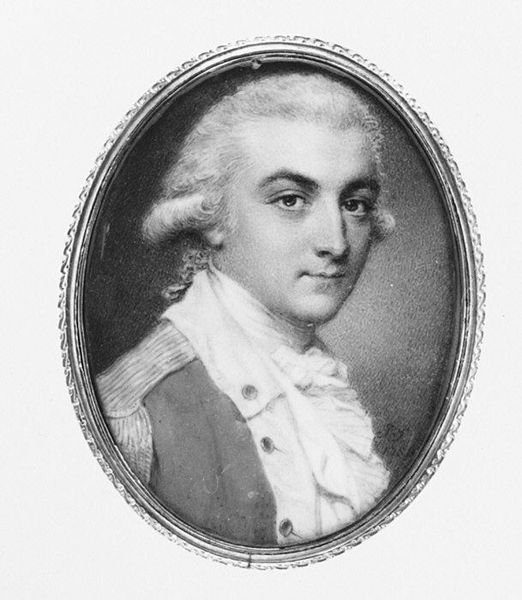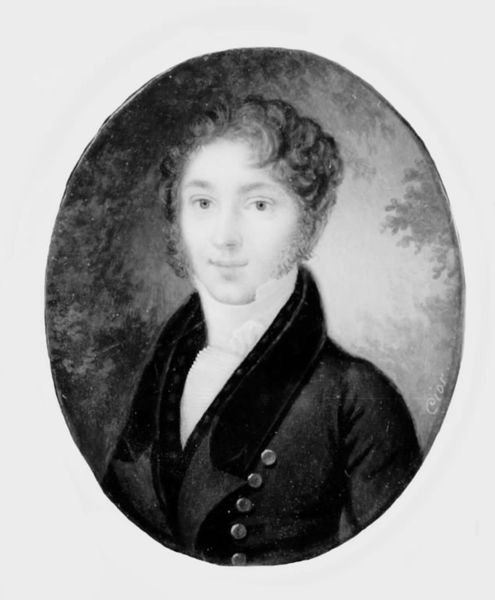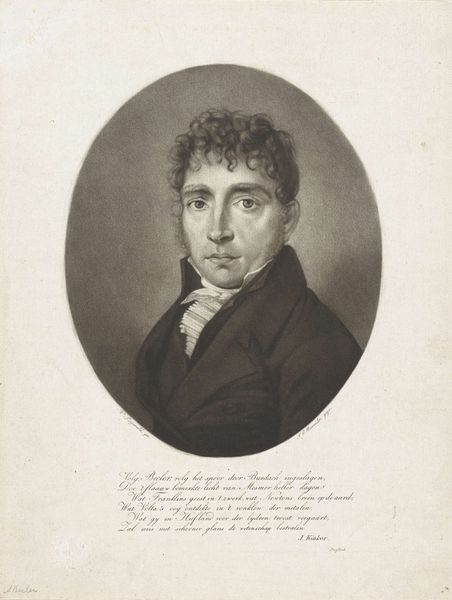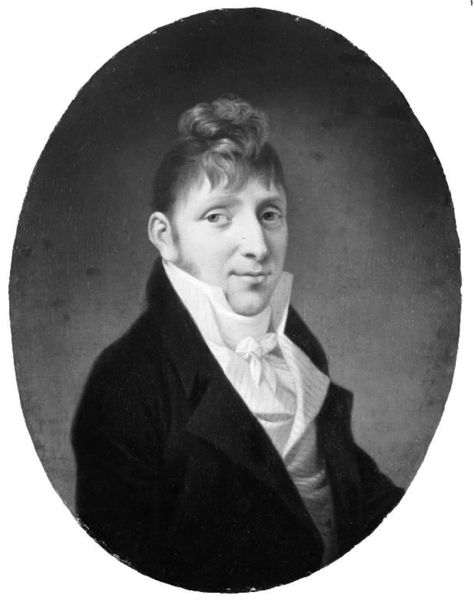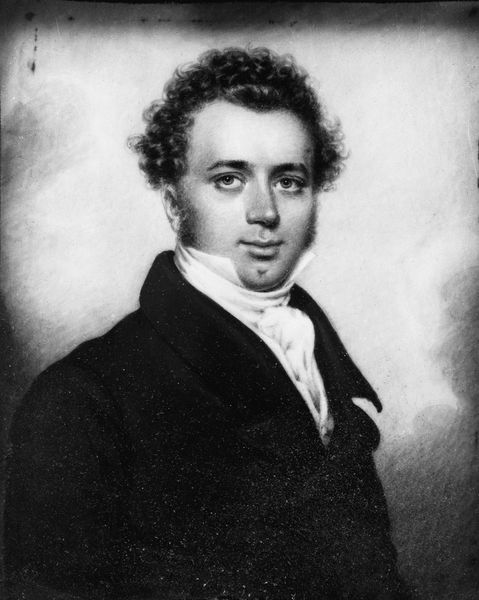
drawing
#
portrait
#
drawing
#
neoclacissism
#
portrait
#
history-painting
Dimensions: Diameter 2 in. (50 mm)
Copyright: Public Domain
J. Lecourt painted this miniature portrait of a man in the early 19th century, using watercolor on ivory. The choice of ivory is significant. In this period, it was a prized, expensive material, linking this intimate portrait to global trade networks and colonial exploitation. Think about the skill required to grind pigments finely enough for such detailed work, the steady hand needed to apply them in delicate washes, and the many hours of labor involved. The silver frame around the portrait wasn’t just decorative; it protected the fragile ivory. The portrait's small size also speaks volumes. These miniatures were often commissioned as keepsakes, tokens of affection, or reminders of loved ones far away. They were intensely personal objects, meant to be held close and cherished. So, while this portrait might seem like a straightforward depiction of a man, it’s also a window into a world of trade, labor, and social customs. By considering the materials and making of this artwork, we gain a richer understanding of its cultural and historical significance.
Comments
No comments
Be the first to comment and join the conversation on the ultimate creative platform.
